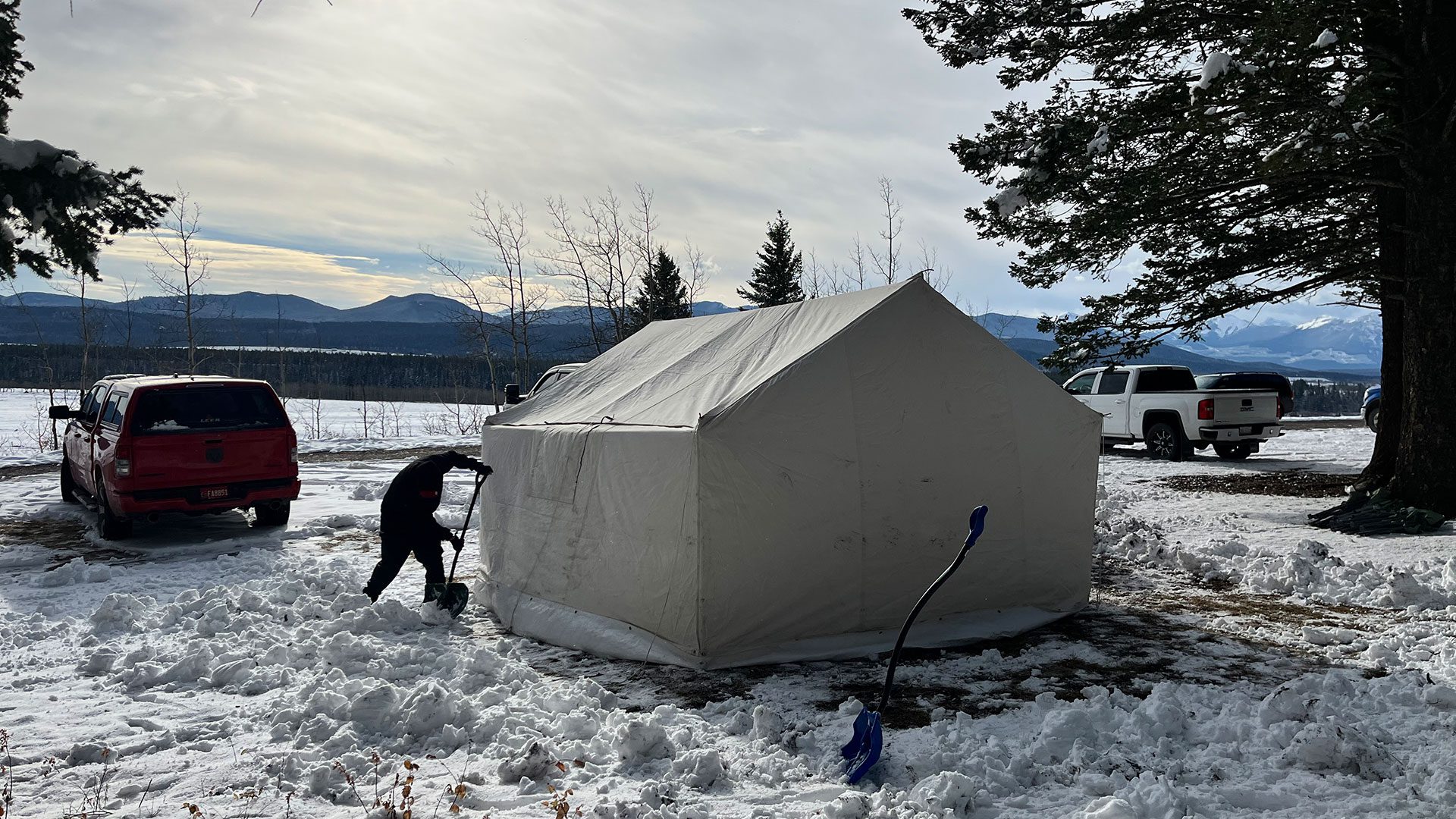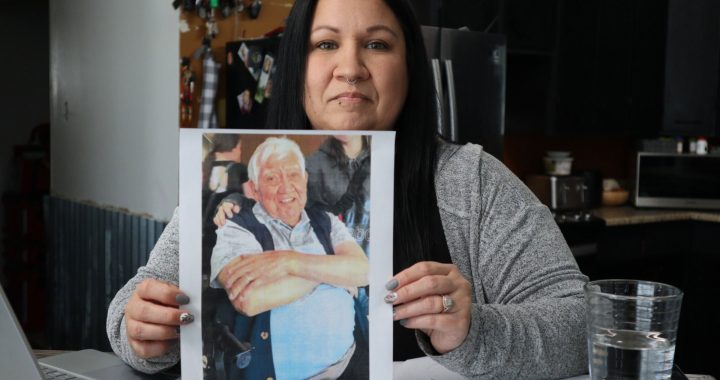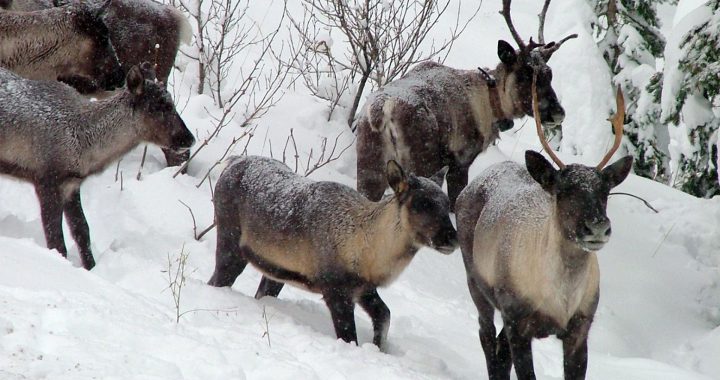
Bison on the Stoney Nakoda First Nation
The group of elders meet early at a Smitty’s restaurant in Morley, Alta. Outside the chalet-style windows, a view of the Rocky Mountains. They are here to talk about how bison can help us with climate change
Indian flute music, which is not in the tradition of the Stoney Nakoda traditions or nearby Cree or Blackfoot, plays in the restaurant.
Gathered here are elders and community people from Stoney Nakoda, each arriving in their own time.
They speak Stoney to one another and greet everyone at the table with a handshake and “hello how are you.”
Bill Snow, who works as the acting director of consultation for the Stony Tribal administration, organized this gathering to share stories of the bison and cultural land management.
“The bison are doing really well adapting to their new environment,” said Snow. “We want to take the report and speak to environmental groups and conferences about the bison and our work,” he says.
At breakfast, Snow talks about the bison cultural monitoring project and how it’s the first study they have been working on. More are underway for studying waterways.
After breakfast is a drive up the mountain to a campground.

The southern part of Alberta has just been treated to a snow dump so the ground is covered in a white wet blanket that turns to slush as a line of trucks and SUVs drive through it.
The men who work for the Stoney Tribal Administration gather to set up a canvas tent for our interview.
“Global warming affects everyone. As native people, we are one with the earth so everything that happens affects us,” Rod Hunter, an elder and counsellor for Bearspaw First Nation.
“Mother earth is rebelling right now. All across the earth, there’s flooding. There’s forest fire.”
“There has been a reduction in water levels in the basin due to hydro and irrigation,” said Snow. He also talks about the Spring Bank reservoir and the man made changes to the environment.
Snow and the elders agree that the dams that have been built in their area were about economic practice rather than conservation.
An elder, Charlie Rabbit, spoke in Stoney and had his words translated by Ear, said that these days even the soil seemed different and that he sees the roots from trees closer to the surface than they have been in the past.
He talked about how the environment has changed so much that, some of the traditional understandings of weather are no longer reliable.
The bison are an important part of the prairies.
They used to roam the grasslands in numbers estimated to be as high as 40 to 60 million.
According to the Wildlife Conservation Society there are now around 11,000 wood bison that roam wild in Canada.
The Stoney Nakoda has been working to increase those numbers, and bring the bison back to their traditional home.
Not only is the survival of the bison important culturally, but it is also important for biodiversity and may have a role to play in forest management.

In the stories told by Stoney Nakoda elders, the Tatâga Mnoga Chugan bison is a warrior who protects the herd. If he is not born, then the herd does not survive.
Elder Henry Holloway, former chief of the Chinkini First Nation tells a story of how the bison warrior in the herd on the Stoney Indian Reserve land tried to defend the herd against a backhoe that Stoney Nakoda hunters were using to carry the body of a bison they had harvested.
“He came running out of the woods where the other buffalo had gone and he had his horns down and was ready to fight,” said Holloway.
It is this warrior spirit that protects the herd. The bison, in turn, protect the environment of their ancestral homeland.
The three nations have worked together along with Parks Canada on the reintroduction of bison into Banff National Park in 2018. They now roam a 1,200 sq km reintroduction zone.
Funding for cultural management
In 2019 the Stony Nakoda nations received money from the Canadian Mountain Network to help support them in cultural monitoring of the bison.
The cultural monitoring of the bison includes ceremony, elder interviews, fieldwork, elder reconnection, report writing, and outreach to describe the cultural impacts of the bison reintroduction.
They are now in their last year of funding and hope that Parks Canada will help to further support their work on cultural monitoring.
Parks Canada told APTN it is planning to release a report in the winter of 2022 that explains the result of the pilot project.
The spokesperson didn’t say whether or not Stoney Nakoda would receive more money.
Bison are often called Buffalo in Canada. Europeans who came to Canada thought the animal resembled a similar one they has seen in Asian and Africa.
The role the bison play in preserving their habitat through grazing and manure is one of many observations from First Nations and Métis communities.
Bison reintroduced after 150 years

Bison have not been seen in Banff for more than 150 years according to Snow. He also said that the Bison are important culturally and that they also help to manage the forest.
“When elders see Banff National Park they say ‘too many trees,’” said Snow. “The Bison would eat the buds off the willow twigs and that prevents them from spreading.”
Snow said the manure and digging done by the herd also help to spread seeds and fertilize the ground.
“Their fur on the backs of their necks is used by birds to line their nests. They support other wildlife this way,” said Snow.
The bison may also contribute to aiding climate change reduction by helping to preserve their preferred choice of habitat – the grasslands they reside on.
A study from the University of California, Davis, found that grasslands and rangelands are more resilient carbon sinks than forests in 21st-century California.
Having bison and the land required to support them means the land is preserved as grassland.
Stoney Nakoda caring for bison
There is a herd of about 90 bison that the Stoney Nakoda have been looking after since the ‘70s on their territory.
“They gave us 25 head of buffalo from Elk Island National Park and they have been here ever since,” said Bill Snow.
“The Goodstoney band, formerly the Wesley band have been looking after the herd since that time,” says Snow.
The bison stay in what is called a Buffalo paddock and are fed over the winter.
This is where the interview with the elders takes place now, and also where Snow helped to organize listening sessions with the elders during the Bison cultural study they performed as a part of their monitoring report for the bison that were reintroduced to Banff in 2018.

Thriving herd due to ceremonies
The 2017 ceremony to move the bison to Banff included two tipis from Treaty 7 and Treaty 6.
The ceremony focused on making sure the Bison’s trip from Elk Island to Mînî Rhpa Mâkoche (Banff) was successful. Two pipe ceremonies were held in Treaty 6 and Treaty 7 areas.
Since 2018 the herd has been thriving, something the First Nations communities attribute to their following traditional ceremony.
According to the report, there has been a 30 per cent a year population growth
“We needed those prayers and that pipe ceremony to make sure the warrior is born,” said Gavin Ear who works as a consultation officer for Bearspaw.
“The bison are really organized animals,” said Holloway. “They migrate together and the only time they really split up is during mating season.”
This focus on ceremony differs from the western way of viewing cultural knowledge, said Snow. In their report, they tried to merge the two worldviews.
Hoping to continue the project with more funding
The Stony bison cultural monitoring works alongside Parks Canada’s other projects for biodiversity in Banff national park.
Snow also hopes that other nations will join in on conservation projects and add their own stories and teachings to projects that affect their areas. Other nations telling similar stories to how bison can help us with climate change, can continue to show how Indigenous knowledge can help with conservation.










